
📚 Getting slapped by a baguette, Pyramid of game design, Art of protecting your guests, 6 Hours with Paddy Upton, Haalarit
Real lessons from Kodak’s decline, Traits that may cease to be valuable, Tyranny of trendy baby names and more
Hello, this is post #193.
Last week was a whirlwind of activity! Last Sunday, we attended Chitra Santhe, an incredible annual art festival that brings together artists and creators from all over the country. Over a thousand artists showcased their work on the streets near a renowned art college here, and the entire town turned up to celebrate and support them. We look forward to this event every year—the energy and vibrancy are unmatched.
The artists' passion and dedication shine through their creations, and I always end up buying a painting or two. Some now hang proudly in our home, while others wait for the perfect spot or moment to make their debut. The joy of finding a piece you love and getting it directly from the artist who poured their heart into it is unforgettable. Here’s a quick glimpse of what we soaked in.
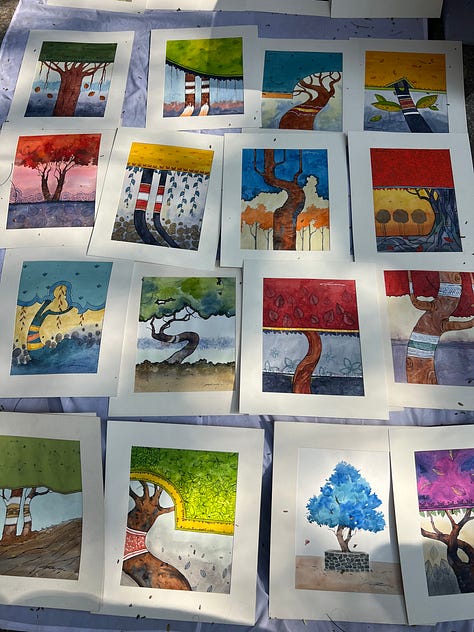
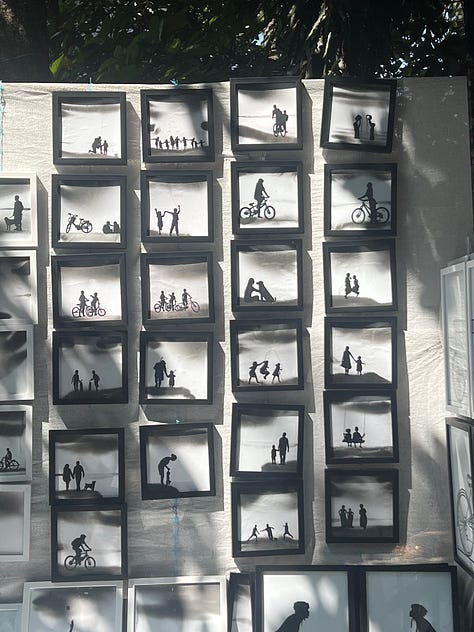


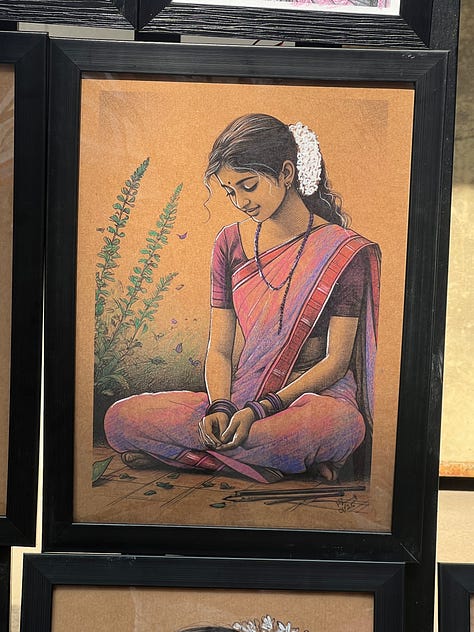




The rest of the week was a mix of intense work, a quarterly review, and a thrilling meeting with Paddy Upton. More on that in this week’s discoveries ahead!
For now, take a quick look at what’s on the lineup:
There is a lot to go over today, let’s get started…
🎮 The Pyramid of Game Design
Last week, I discovered Nicolas Lovell’s work through his video The Pyramid of the Free-to-Play and was intrigued by his approach. The video provides a great overview of his idea, but diving deeper into his book The Pyramid of Game Design was even more rewarding.
Here take a quick look at his pyramid structure:
Sharing a couple of useful snippets to explain the above pyramid.
A successful Base Layer for a service game has the following characteristics:
It is fun, for some value of fun.
It is replayable (like the maps of a first-person shooter or the procedurally generated experience of an endless runner) or cheap to develop (like the designed levels of a Match-3 game).
It can connect with the Retention Layer to give the player a sense of progression.
It has elements of choice, randomness, skill, interacting systems or other players to create unpredictability (although many successful service games choose to downplay skill, particularly on mobile).
You can think of the Retention Layer as the systems and feedback that we give the player to know that she is making progress. In mobile games, it is the Retention Layer that enables titles to move from being snackable fun into enduring experiences that keep players engaged for months or years.
Hurst argues that video games are better at providing positive feedback and a sense of advancement than the real world of jobs, relationships and commitments. His arguments chime with the principles of SelfDetermination Theory (SDT), a framework to explain why people play video games, which was proposed by researchers Andrew Przybylski, Scott Rigby and Richard Ryan. SDT posits that people engage in voluntary behaviour like play or enjoy their work more to the extent that it satisfies three elements: • Competence: feeling like they are doing well and making progress. • Autonomy: having meaningful choices over what to do and confidence that those choices matter. • Relatedness: having a meaningful connection with other players or even non-player characters.
Superfan Layers are often where the game changes and adapts for a smaller community of highly engaged players. The Superfan Layer is often competitive and collaborative, a social experience. It is me and my friends against you and your friends. A clash. Of clans.
📽️ Alamo Drafthouse & the Art of Protecting Your Guests
In “The Art of Gathering”, Priya Parker shared a fascinating story.
“When it comes to using our power to protect guests, we could learn from the Alamo Drafthouse, a movie theater chain founded in Austin, Texas, with locations now in several cities. How many times have you been in a movie theater, trying to watch the show, and one or two rows behind you are people loudly stage-whispering to each other? Or the person next to you takes out their phone and the radiating white light competes with the big screen? How bad does it have to get for you to say something? Perhaps you say something and nothing happens. Perhaps you say something and a conflict breaks out, ruining the movie for even greater numbers of people.
What sets the Alamo apart, in addition to its large seats and its food and beverage service during the show, is that it practices generous authority. Most movie theaters, like so many hosts, focus primarily on their own host-guest relationship, overlooking the audience’s internal relationships: that of guest to guest. The Alamo does not make this mistake. Someone there seems to have realized that other theaters outsource the role of enforcer to their patrons, which is a role a paying customer should not have to play. And so when you watch a film at the Alamo, you see an announcement that warns you not to text or talk during the show, which many theaters have. But here’s the clincher: If you do, you will get one warning by the staff. If you do it a second time, you will “be ejected.” And if you, as a customer, see another customer breaking one of the rules, you can simply put up your “order card” at your table and the theater will take care of it. (Customers also write down food orders on the same card to signal the waiter, so the anonymity of the snitch is safe.) The waiters deliver on the promise by serving as enforcers. I can attest that they do their job.
While she used this example to emphasize the importance of protecting guests, I appreciated it for another reason—it underscores how rules without proper enforcement often fall flat. In India, many of our traffic issues stem from weak or non-existent enforcement of traffic laws. Over time, some of these habits have become ingrained in our ‘culture.’ While technology can help identify and flag violations, the real challenge lies in enforcing consequences. This step is crucial for curbing violations and fostering safer habits on the road.
🏏 Leadership Lessons from Paddy Upton
Last Friday, I had the incredible opportunity to attend a training session led by none other than Paddy Upton. It was a full-day session where Paddy guided our leadership team through his approach to leadership and team development for achieving better results.
The experience was phenomenal. Paddy shared straightforward, actionable ideas and demonstrated how to apply them effectively. His vivid stories, particularly from his time coaching the Rajasthan Royals & Indian Cricket Team, made the lessons unforgettable—they're etched in my mind along with those anecdotes.
About 1.5 years ago, in #110, I shared Jitha’s post on his experience attending Paddy’s training. I’m resharing it here, along with my favorite take away from the session.
📸 Real Lessons from Kodak’s Decline
My first camera was a Kodak KB10 Point and Shoot—a prized possession I cherished until I transitioned to digital cameras. Over the years, I’ve often heard variations of the question, “Why did Kodak fail?” Most answers point to the idea that Kodak’s leadership didn’t act quickly enough to embrace digital technology, which ultimately decimated their traditional business. This single explanation, while compelling, doesn’t fully capture the story of Kodak’s decline.
Willy Shih, a former senior vice president at Eastman Kodak Co. and president of the company’s consumer digital business, sheds light on the complexities in “The real lessons from Kodak’s decline”. His perspective, as someone who was at the heart of the company during pivotal times, reveals the deeper structural and market dynamics at play. The challenges Kodak faced weren’t just about technology—they were a result of many interconnected factors that aren’t always easy to grasp.
Shih’s insights were an eye-opener for me, offering a nuanced understanding of how businesses operate under immense pressure. If you’re curious about the intricate web of decisions and circumstances behind Kodak’s downfall, you will like this one.
(via Benedict Evans)
🥖 Getting Slapped by a Baguette
Matt Dicks’ Storyworthy is hands down the best book I’ve read on storytelling. True to its purpose, the book is packed with stories and anecdotes that make the lessons unforgettable. One standout example is the quirky idea of “Start with getting slapped by a baguette.”
Neal revisited this in a recent “Demand Curve” post, and I found myself both chuckling and having an aha moment.
Matt calls this technique “Anchoring in a specific moment.” It’s a simple yet powerful approach that enhances storytelling by grounding it in vivid, relatable details. This strategy isn’t just for crafting personal stories—it’s highly relevant for business storytelling and brand building too.
For Harry Potter fans, Neal’s post includes a fantastic example that perfectly illustrates the concept. I won’t spoil it for you, but it’s definitely worth the read!
👱 Traits That May Cease to be Valuable
Carter Mark and Jordan Gonen make a list of skills and traits that are viewed as valuable now—but may cease to become valuable in the near future. Some non-intuitive ideas here:
Speaking other languages at a beginner to intermediate level: The constant improvement of real-time translation might further trivialize the usefulness of knowing how to read a sign when you are on vacation. Being a fluent or native-level speaker in other languages, on the other hand, should continue to be valuable.
Knowing how to drive: Jury’s still out on this one, but it seems pretty likely knowing how to drive will be less useful in fifty years than it is today.
They also explore what might gain value in the coming decades, offering fresh insights into what sets human interaction and intelligence apart. It’s a thought-provoking take on how these qualities could stand out in a world increasingly shaped by technology and AI. A couple of noteworthy mentions:
Doing things in real life: Tech, AI, VR, etc. continue to make it increasingly easy to not do things in real life. To connect with anyone from your home. Which may mean that in-person interactions become even more special, unique, and valuable.
Being funny: May help with connection and having an audience.
Having good taste: We don’t have the perfect definition here. But it seems likely that in a world where there are more things than ever, and those things are more available to everyone, having an eye for what’s actually good will become more useful.
What do you think?
✨ Everything else
In America, how you spell your name says a lot about when you were born. The mysterious tyranny of trendy baby names gives a quick background on this claim.
#TIL Haalarit are overalls worn by Finnish university students, covered in patches they get from attending events, organization affiliations, and friendships. (via Kottke)
In 1886, the US changed the width of 1000s of miles of railroad track (and the wheels on thousands of rail cars) in only 2 days. How was it even possible!
ICYMI…
Sasha Chapin’s “How to like everything more” and the two stories from Juggernaut are my favorites from last week’s post. Many other readers seem to have concurred. Check them out in the link below:
That's all for this week, folks!
I hope I've earned the privilege of your time.
If you liked this post, please hit the ❤️ below and leave a comment to tell me more. Forward it to a friend who will find it useful, there is no better way to make this world more curious!




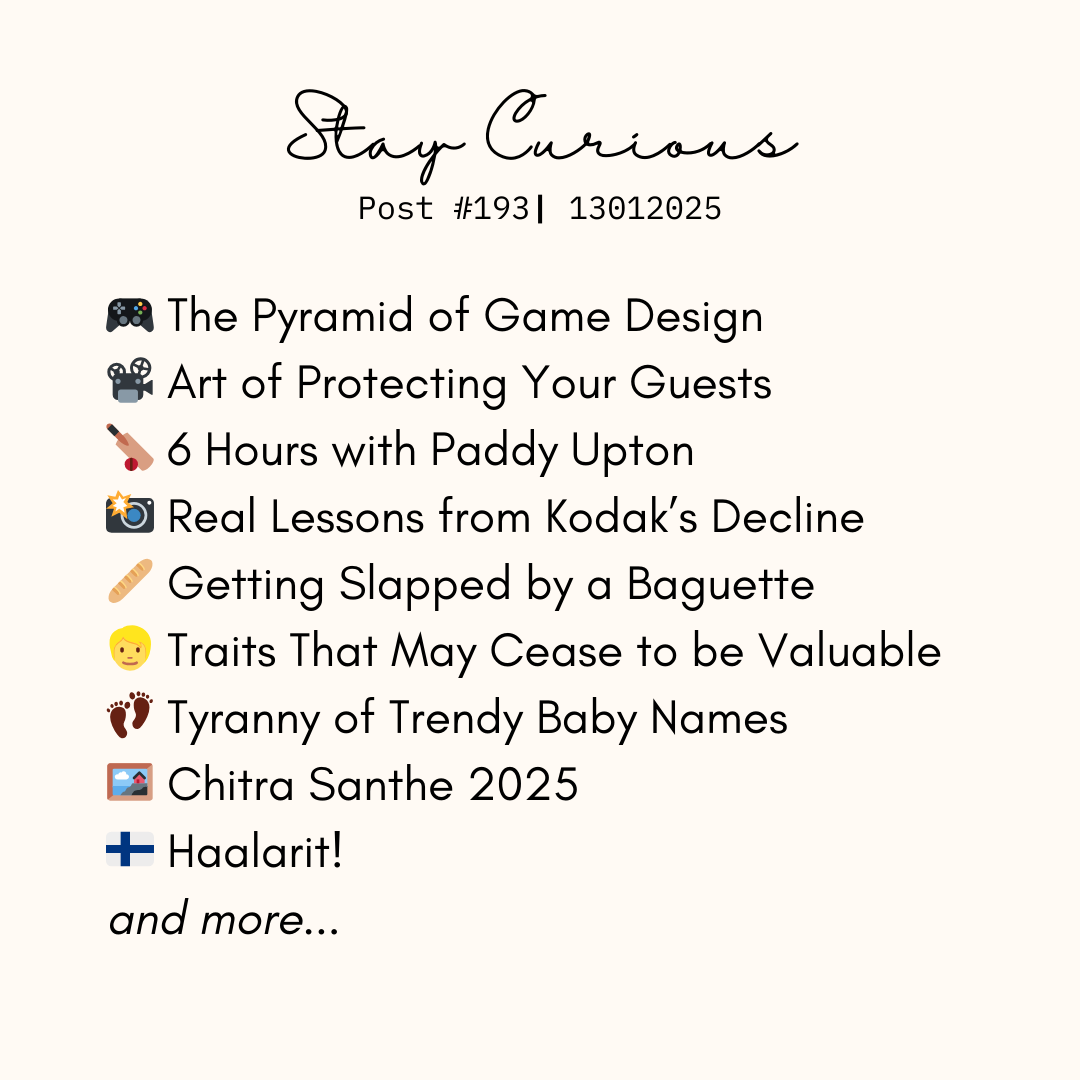
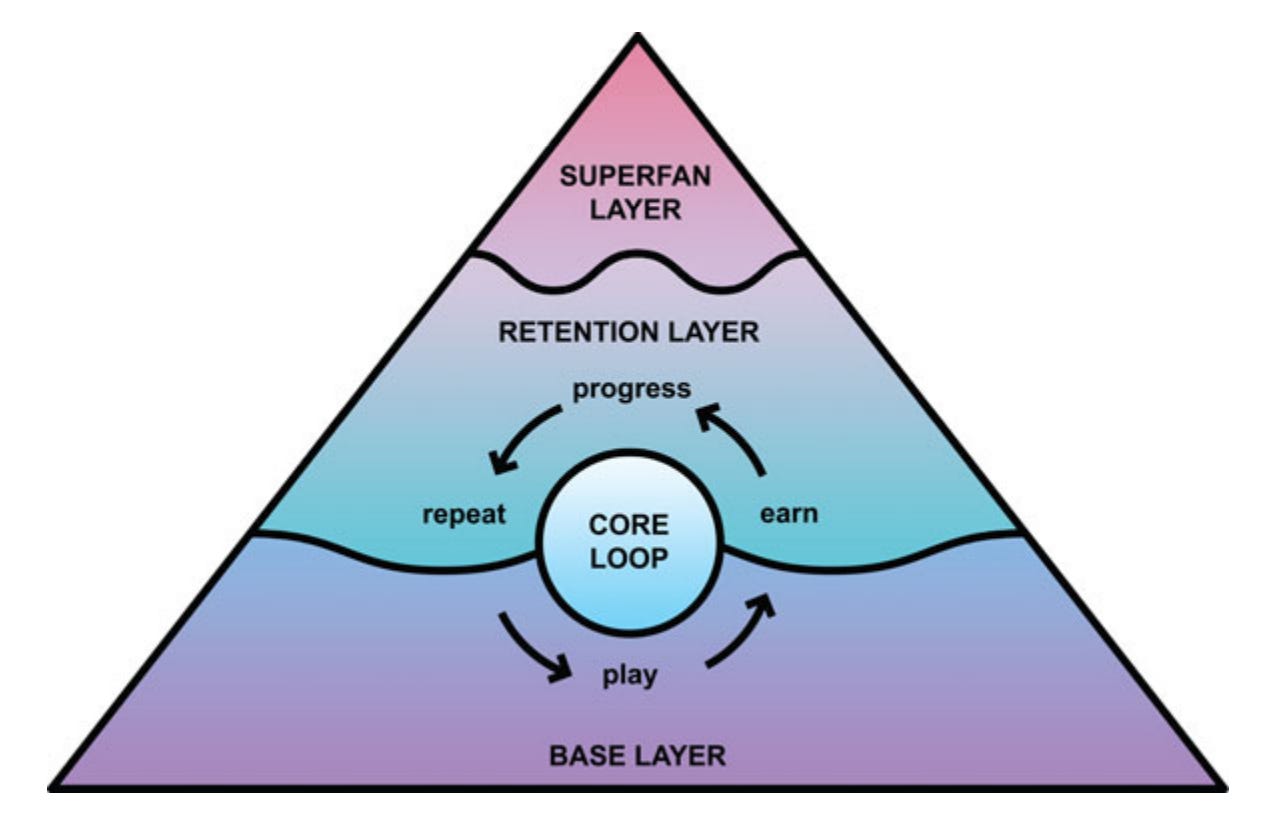
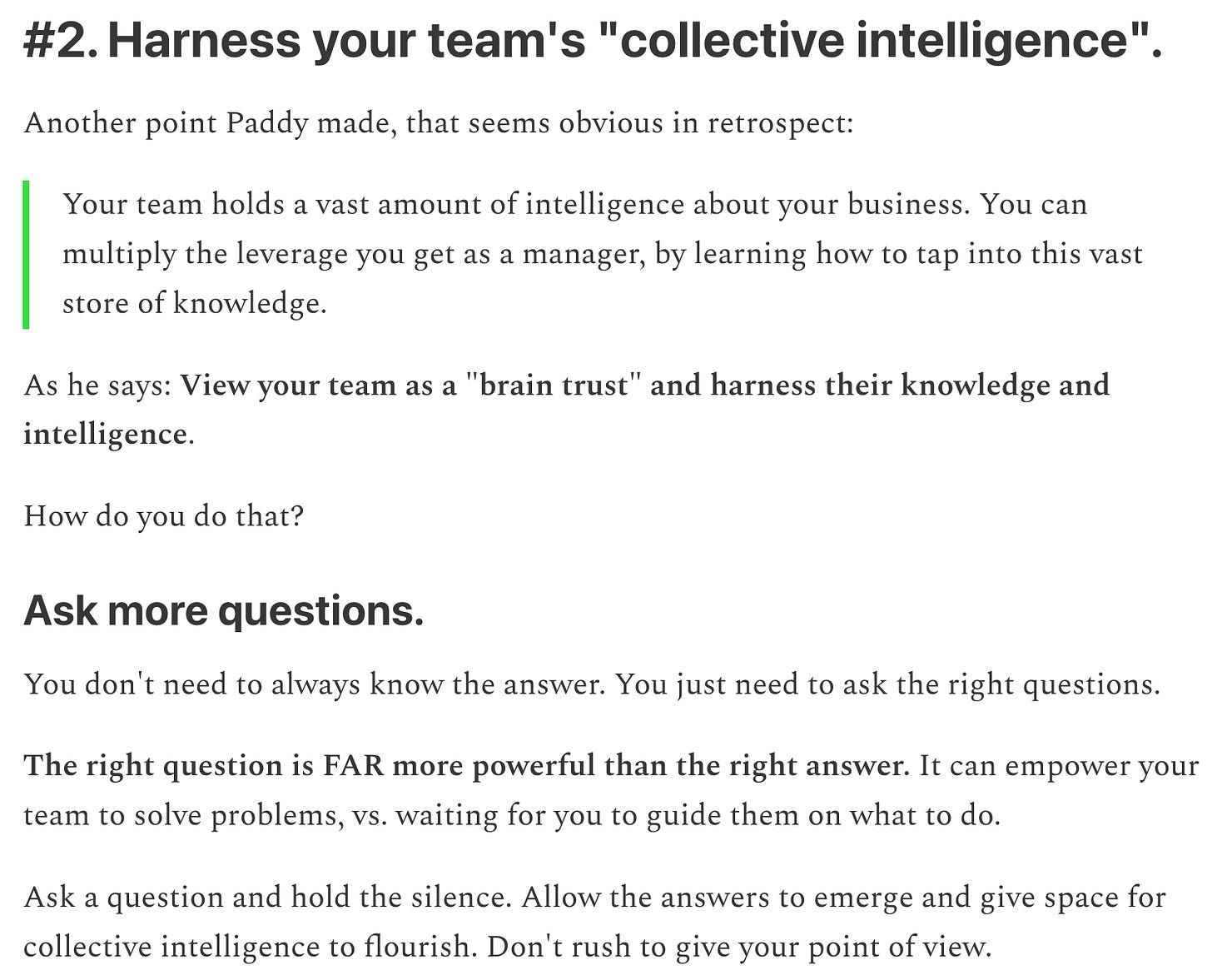




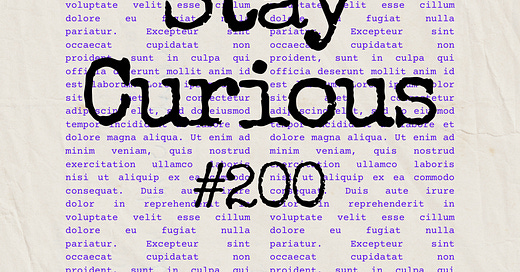





Meeting people for real and being open about own experiences has been a great learning exercise for me, thanks for reaffirming the same.